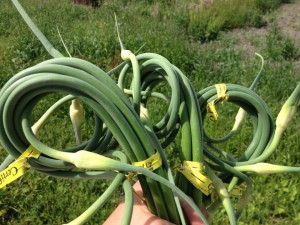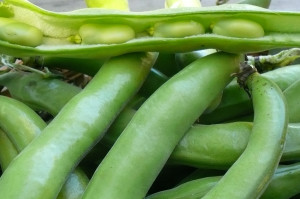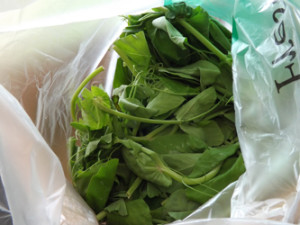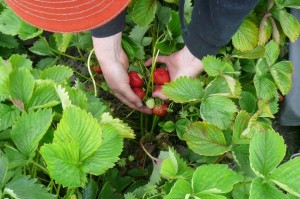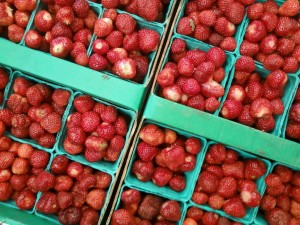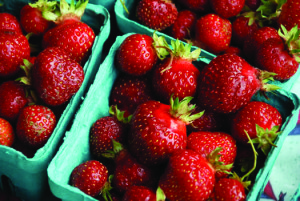Garlic scapes are the “flower stalks” of hardneck garlic plants, although they do not produce flowers. These stalks start to appear a month or so after the first leaves. They are usually cut off of the plant, since leaving them on only diverts the plants strength away from forming a plump bulb. If left on, they eventually form small bulbils that can be planted to grow more garlic, but it takes 2–3 years for them to form large bulbs. Many gardeners simply toss their scapes in the compost, but garlic scapes are both edible and delicious, as are the bulbils.Their flavor is milder, but still distinctly garlic. I brush them with olive oil and put them under the broiler until golden. Keep an eye on them, because they broil very quickly. Then they can be pureed and spread on crackers, or added to fava bean hummus. Here’s another great recipe for homemade garlic-flavored vinegar.
1-2 whole garlic scapes, about 12″ in length
Note: Add more garlic scapes for more flavor
1 cup light vinegar, like white wine or rice vinegar
Glass container with non-metal cap or cover
Sterilize bottle and cap, in boiling water or dishwasher. Dry thoroughly.
Wash garlic scapes and allow to dry. Cut into lengths so that the scape can be completely submerged. Do not allow any scape to be exposed.
Roll the scapes gently with a rolling pin, to release more flavor.
Place the scape pieces in the sterilized container and cover completely with vinegar. Cover with lid, cap or cork.
Store in the refrigerator, or other cool, dark place. Check the level of the vinegar in 24 hours and add more if the level has dropped at all.
Soak for 2 weeks. Take out original scape pieces (chopsticks work!), and replace with fresh ones for decoration if you want. Will keep for 2-4 months.
Watch for changes in color, smell, or cloudiness in the bottle and discard if there is a question. Store in the fridge.
Have you tried this recipe? Tell us how it turned out!

